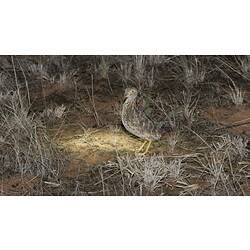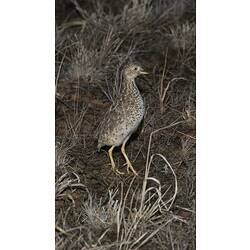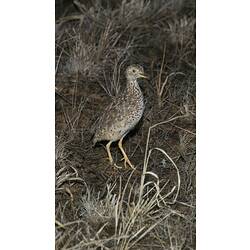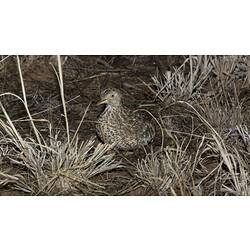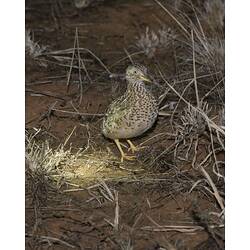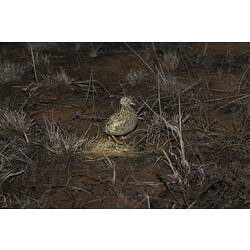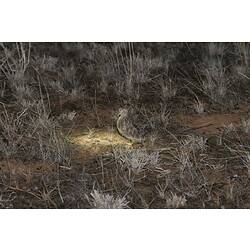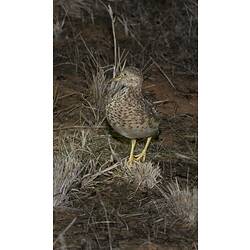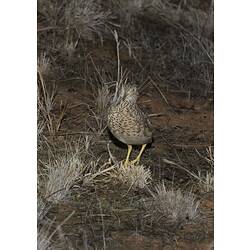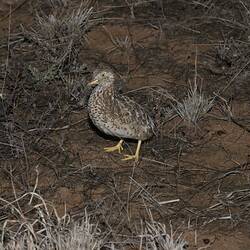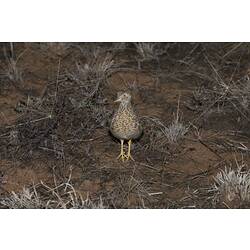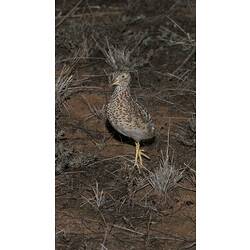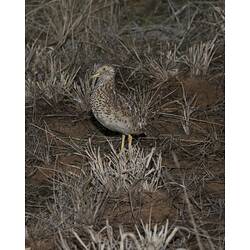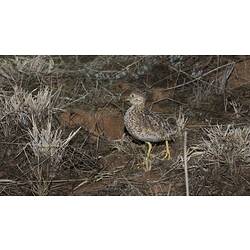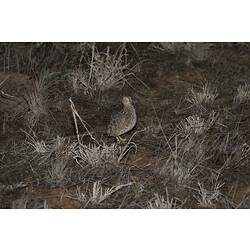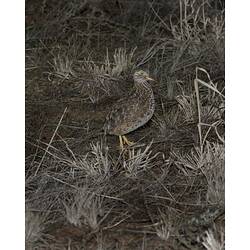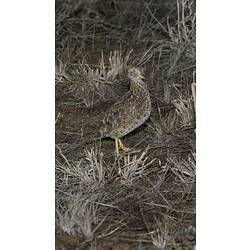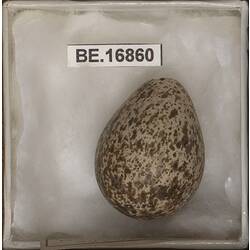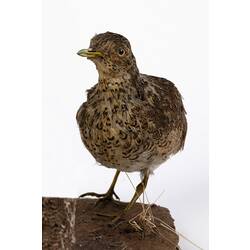General Description
Small bird with cryptic plumage. Males have scalloped brown and beige plumage, yellow bill and yellow legs. Female have a prominent red breast and black and white 'necklace'. Body is stout, with a narrow neck connected to a round head. Weight up to 95 cm, head-body length up to 15 cm.
Biology
An evolutionarily unique species, the Plains-wanderer represents the only remaining member of its family, Pedionomidae. The species exhibits polyandry - females mate with multiple males - and the female is the more brightly coloured sex. Males raise the young.
Distribution
Australia - scattered sites in New South Wales, Victoria, Queensland and South Australia
Habitat
Semi-arid, lowland remnant grasslands, open plains, paddocks with appropriate vegetation and soil.
More Information
-
Animal Type
-
Fast Fact
Occasionally called the 'goldilocks' bird because of their need for grassland habitats with the right mix of soil types and vegetation structure. Males care for the young on their own. Females make distinctive 'oom' calls by inflating their necks and blowing air out their nostrils.
-
Brief Id
A small, upright camouflaged bird with a stout body, narrow neck and round head.
-
Colours
Brown, Beige, Red, Yellow
-
Maximum Size
15 cm
-
Habitats
-
Diet
Omnivore
-
Diet Categories
Seeds, Insects, Spiders
-
Endemicity
-
Commercial
No
-
Conservation Statuses
CITES: Not listed, EPBC Act 1999: Critically Endangered, IUCN Red List: Critically Endangered, FFG Threatened List: Critically Endangered
-
Taxon Name
-
Common Name
Plains-wanderer
-
Kingdom
-
Phylum
-
Subphylum
-
Class
-
Order
-
Family
-
Genus
-
Species Name
torquatus

